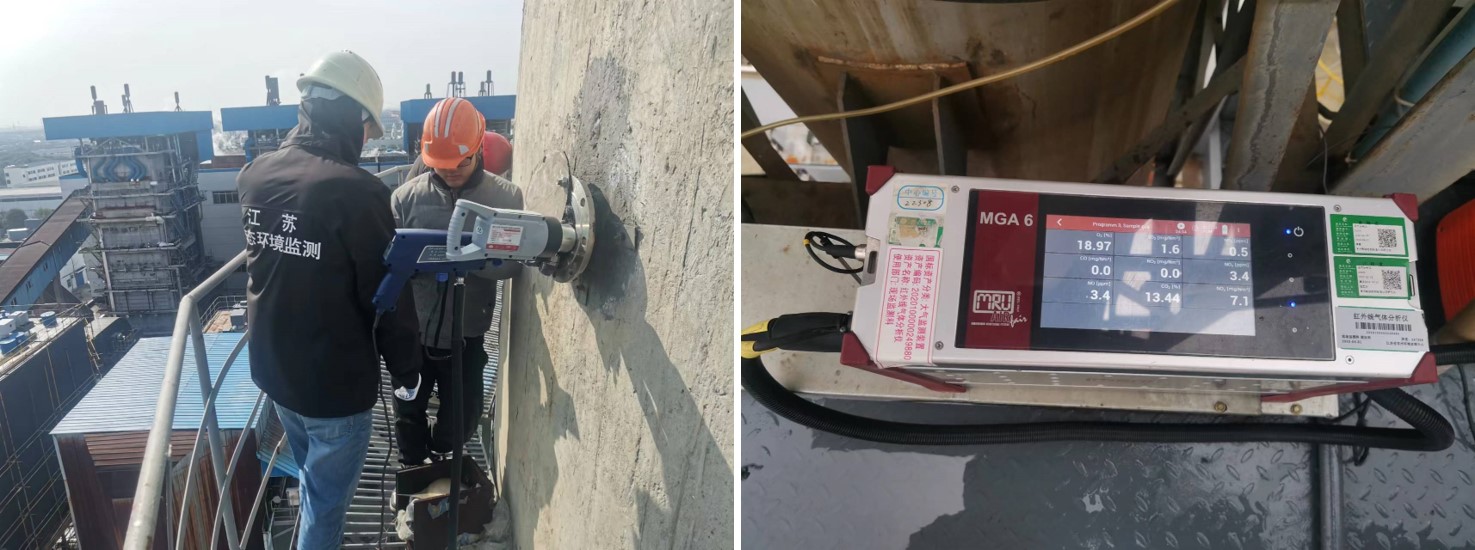Efforts should be made to build an integrated carbon monitoring system to support the high-quality development of low-carbon cities
On May 15, we will usher in the 12th "National Low Carbon Day". The national main event of the "National Low Carbon Day" will be held in Changzhou, which is the first time that the national main event has been held in a non-provincial capital city since its establishment, demonstrating the recognition and affirmation of the Ministry of Ecology and Environment for the construction of low-carbon cities in Changzhou in recent years. In 2023, while the city's GDP will exceed the trillion mark, and the total output value and added value of industries above designated size will increase by 6.5% and 8.8% year-on-year respectively, while NO2, SO2, and soot emissions will decrease by 2.64%, 7.41%, and 17.89% year-on-year respectively, and the reduction of energy consumption and carbon emission intensity per unit of GDP will lead the province, and the national low-carbon city pilot excellent city score will rank sixth in the country and first in the province. As one of the important technical support forces to serve local pollution reduction and carbon reduction, the Changzhou Environmental Monitoring Center of Jiangsu Province (Hereinafter referred to as Changzhou CenterAdhering to technological innovation as the starting point and solving problems as the guide, we are committed to building an integrated carbon monitoring system for the sky and ground, and actively carry out the evaluation of the effectiveness of regional carbon emission reduction and the prediction of the potential of carbon reduction and sink increase, so as to provide strong support for promoting the carbon peak and carbon neutrality in Changzhou.
Occupy the "Sky Domain": Accurately measure carbon sinks with remote sensing technology
The development of new productive forces is inseparable from the application of cutting-edge science and technology. Remote sensing can quantitatively and finely monitor and evaluate the process of carbon emission and absorption from a large temporal and spatial scale, which is an important technical means to realize carbon monitoring and gradually establish a systematic carbon budget measurement. Since 2023, the Changzhou Center has been actively exploring the application of remote sensing technology in the field of environmental monitoring, using the remote sensing data of the Sentinel-2 satellite, combined with multi-source data types such as surface vegetation cover types and meteorological monitoring stations, to estimate the net primary productivity of Changzhou's vegetation ecosystem, and accurately calculate the carbon sink capacity of forests and lakes and wetlands with the help of CASA models. The results show that the overall carbon sink of lake aquatic vegetation and forest vegetation in Changzhou in 2022 is 12,000 tons, and the overall carbon sink of forest vegetation is 299,400 tons, of which the carbon sink value of arbor forest is 216,300 tons, accounting for 72% of the city's carbon sink in 2022.
Observing "airspace": leading green development with new "carbon" technology
On the shore of the rippling blue lake, an advanced carbon flux observation tower stands majestically, which is not only the "wisdom eye" to monitor the carbon exchange between the atmosphere and the lake water body, but also a strong "guardian" to protect the ecological balance. In August 2023, the first lake carbon flux monitoring equipment in Changzhou, led by Changzhou Center, was installed and put into operation in Juhu Lake. Since its completion, more than 30 GB of data has been provided for the monitoring of carbon fluxes in the lake, and more than 240 million pieces of data have been generated, and the material elements between the water vapor of the lake have been observed in detail (These include water, greenhouse gases, and energy, among others), process variables (Including radiant flux, sensible heat flux, water vapor flux and CO2 fluxand spatiotemporal variations, providing a scientific basis for the health and carbon management of lake ecosystems.

Defend the "region": strengthen the monitoring of carbon emissions in key areas
Industry is one of the main areas that produce carbon emissions, which has an important impact on the overall realization of carbon peak in the country. In order to further reduce carbon emissions in key areas, after several rounds of investigation and research, the Changzhou Center selected 11 typical enterprises in cement, electric power and steel and other areas with large carbon dioxide emissions to carry out carbon emission monitoring, obtained a total of 66 data, found 4 problems, and put forward 5 targeted suggestions, which provided decision-making support for better understanding the carbon emissions and changing trends of different enterprises in Changzhou, and more accurately promoting the implementation of "one enterprise, one policy" carbon reduction measures.

In the next step, the Changzhou Center will thoroughly implement the spirit of the National Ecological Environment Monitoring Conference, take the construction of a modern ecological environment monitoring system as the traction, continue to strengthen the research on carbon source/carbon sink monitoring, deepen technological innovation, expand business areas, and provide strong monitoring support for accelerating the construction of a "new energy city" and building a "Yangtze River Delta ecological axis" with high standards.







